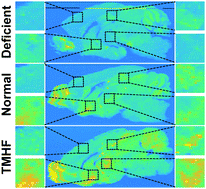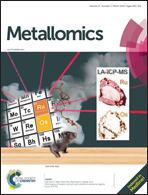Dietary lipophilic iron alters amyloidogenesis and microglial morphology in Alzheimer's disease knock-in APP mice
Abstract
Alzheimer's disease (AD) is a progressive neurodegenerative disorder characterized pathologically by amyloid beta (Aβ) deposition, microgliosis, and iron dyshomeostasis. Increased labile iron due to homeostatic dysregulation is believed to facilitate amyloidogenesis. Free iron is incorporated into aggregating amyloid peptides during Aβ plaque formation and increases potential for oxidative stress surrounding plaques. The goal of this work was to observe how brain iron levels temporally influence Aβ plaque formation, plaque iron concentration, and microgliosis. We fed humanized APPNL-F and APPNL-G-F knock-in mice lipophilic iron compound 3,5,5-trimethylhexanoyl ferrocene (TMHF) and iron deficient diets for twelve months. TMHF elevated brain iron by 22% and iron deficiency decreased brain iron 21% relative to control diet. Increasing brain iron with TMHF accelerated plaque formation, increased Aβ staining, and increased senile morphology of amyloid plaques. Increased brain iron was associated with increased plaque-iron loading and microglial iron inclusions. TMHF decreased IBA1+ microglia branch length while increasing roundness indicative of microglial activation. This body of work suggests that increasing mouse brain iron with TMHF potentiates a more human-like Alzheimer's disease phenotype with iron integration into Aβ plaques and associated microgliosis.



 Please wait while we load your content...
Please wait while we load your content...